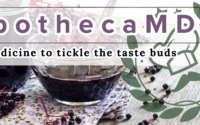Hamsters fed diets high in saturated fat have increased cholesterol accumulation and cytokine production in the aortic arch compared with cholesterol-fed hamsters with moderately elevated plasma non-HDL cholesterol concentrations
J Nutr. 2004 Feb;134(2):410-5. doi: 10.1093/jn/134.2.410.
ABSTRACT
There is growing evidence that dietary fatty acids and/or dietary cholesterol could have a direct role on inflammatory diseases such as atherosclerosis. F(1)B Golden Syrian hamsters (Mesocricetus auratus), in 2 groups of 72, were fed for 10 wk a semipurified diet containing either 20 g/100 g hydrogenated coconut oil without cholesterol or cocoa butter (20 g/100 g) with cholesterol (0.15 g/100 g). After the 10-wk treatment period, plasma was collected from food-deprived hamsters (16 h) for plasma lipid measurements. Hamsters were then ranked according to their plasma VLDL and LDL cholesterol (non-HDL-C) concentrations with 1.86 mmol/L as the cut-off point between low (Low; n = 36) and medium (Med; n = 36) concentrations for each treatment. Hamsters in the Low and Medium groups fed cholesterol (Low-chol) had significantly lower plasma total cholesterol (TC) concentrations than hamsters in the Low group fed coconut oil (Low-CO). However, this difference for the Medium group was reflected in significantly lower plasma HDL cholesterol (HDL-C) concentrations. Hamsters in the Low-CO group had significantly higher aortic total and esterified cholesterol concentrations than hamsters in the Low-chol group. Hamsters in the Low-chol group had significantly higher aortic tumor necrosis factor-alpha concentrations than hamsters in the Low-CO group. Hamsters in the Med-CO group had significantly higher aortic interleukin-1beta concentrations than hamsters in the Med-chol group. In conclusion, the present study suggests that dietary cholesterol and saturated fatty acids could have an effect on atherosclerosis not only beyond their role in affecting plasma lipoproteins but also through increased production of inflammatory cytokines in the arterial wall.
PMID:14747681 | DOI:10.1093/jn/134.2.410

